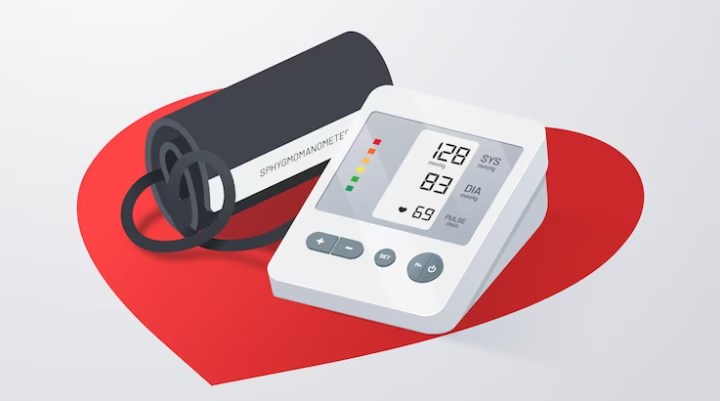Unraveling Labile Hypertension: Causes and Management

Welcome to a deep dive into the intricate world of labile hypertension. This article aims to shed light on the subject by unmasking what it is, the blood pressure types it’s related to, and the potential risks it carries.
Further, we’ll outline its diagnosis and treatment methods, draw comparisons with similar conditions, and provide essential tips to prevent high blood pressure, helping you maintain optimal cardiovascular health.
Unmasking Labile Hypertension
Labile hypertension is a somewhat enigmatic condition in the realm of cardiovascular health. In this condition, blood pressure levels tend to fluctuate dramatically and unpredictably. Unlike persistent hypertension, where blood pressure readings are consistently high, this one is characterized by wide swings in readings, with blood pressure levels varying from high to low within a remarkably short period. The instability of these readings is a hallmark of this condition.

Understanding the causes of variable blood pressure is a crucial part of the puzzle. Stress and emotional triggers often contribute to these fluctuations. Notably, research indicates that people with certain psychological or neurological conditions may be more prone to this type of variably elevated blood pressure. Moreover, such type of blood pressure may sometimes be an indication of a more serious underlying condition such as pheochromocytoma, a rare tumor that can cause sporadic secretion of hormones affecting blood pressure.
Blood Pressure Types
Blood pressure is typically categorized into four types: normal, elevated, stage 1 hypertension, and stage 2 hypertension. Each category is defined by specific ranges of systolic and diastolic blood pressure readings. However, variable blood pressure does not fit neatly into these categories.
The transient nature of variably elevated blood pressure allows it to oscillate unpredictably between these ranges, thereby complicating its classification.
Here’s a simple breakdown of blood pressure categories:
- Normal: Systolic less than 120 mm Hg and diastolic less than 80 mm Hg;
- Elevated: Systolic between 120-129 mm Hg and diastolic less than 80 mm Hg;
- Stage 1 Hypertension: Systolic between 130-139 mm Hg or diastolic between 80-89 mm Hg;
- Stage 2 Hypertension: Systolic 140 mm Hg or higher or diastolic 90 mm Hg or higher.
Risks of Labile Hypertension
Variable blood pressure, despite its elusive nature, has the potential to significantly impact an individual’s health. It might not present the same consistent high blood pressure readings as persistent hypertension, but its intermittent spikes and drops create a unique set of challenges and risks.
The erratic behavior of variable blood pressure presents several key health risks:
- Cardiovascular Strain: The sudden surges put a significant burden on the heart and blood vessels. Over time, this sporadic yet intense strain can cause damage to these vital structures;
- Increased Risk of Heart Disease and Stroke: Chronic strain on the heart and blood vessels can lead to various cardiovascular issues. Over time, individuals with variable blood pressure may have an increased risk of developing heart disease, heart attacks, and stroke due to the damage caused by these unpredictable fluctuations;
- Potential for Misdiagnosis or Mistreatment: The variable nature of labile hypertension can make it difficult to diagnose and treat accurately. This could result in over-treatment when blood pressure spikes or under-treatment when it drops back down, each carrying its own set of risks and complications;
- Elevated Stress Levels: Episodes of labile hypertension are often associated with increased stress or emotional instability. This added psychological component can exacerbate the condition and contribute to a cycle of escalating blood pressure levels;
- Development of Persistent Hypertension: Over time, labile hypertension could potentially transition into persistent hypertension, a condition with its own severe health implications;
- Aggravation of Other Health Conditions: For individuals with other health issues, particularly cardiovascular or kidney diseases, the erratic blood pressure changes can further exacerbate these conditions.
The volatile nature of labile hypertension underscores the importance of regular monitoring, comprehensive understanding, and a proactive approach to managing this condition effectively.

Diagnosing and Treating Labile Hypertension
Recognizing LH can be a challenging task due to its fluctuating nature. It often calls for consistent or frequent blood pressure checks, such as home-based or ambulatory blood pressure monitoring, to discern the fluctuating pattern.
Handling labile hypertension primarily involves modifying lifestyle habits, including
- Prioritizing a nutrient-rich diet full of fruits and vegetables;
- Ensuring regular exercise and physical activity;
- Adopting techniques for stress reduction, like yoga, mindfulness, or deep breathing exercises;
- Limiting the consumption of substances that may affect blood pressure, such as caffeine and alcohol.
In certain scenarios, medicinal intervention may be necessary. It’s essential to keep in mind that any treatment plan should be tailored to the individual, considering factors like their overall health, lifestyle, and any other existing medical conditions.
Conditions Similar to Labile Hypertension
White-coat hypertension and masked hypertension are two conditions that may seem similar to labile hypertension due to their irregular blood pressure patterns. However, the triggers and patterns of fluctuation in these conditions differ.
White-coat hypertension refers to blood pressure readings that are high only in a clinical setting and normal when measured at home. Conversely, masked hypertension is characterized by normal blood pressure readings in a clinical setting but elevated readings at home or outside the doctor’s office. Both conditions can be identified with similar strategies as variably elevated blood pressure, such as home or ambulatory blood pressure monitoring.
Tips to Avoid High Blood Pressure
Preventing high blood pressure requires a proactive approach to health and wellness. Here are some strategies that can help:
- Embrace a diet balanced in lean proteins, whole grains, and fruits/vegetables, while minimizing salt intake;
- Incorporate regular exercise into your routine, promoting a healthy weight and helping to lower blood pressure;
- Limit your alcohol and caffeine intake, as excessive consumption can affect blood pressure;
- Implement stress-reducing practices like mindfulness, yoga, or meditation into your daily routine;
Also, you want to monitor your blood pressure regularly and maintain consistent communication with your healthcare provider. This will ensure that any potential issues can be spotted and addressed promptly.
Key Takeaways
| Points | Description |
|---|---|
| Labile Hypertension | A blood pressure condition characterized by unpredictable fluctuations, often triggered by stress and emotional factors. Can be a sign of more serious underlying conditions like pheochromocytoma. |
| Blood Pressure Types | Blood pressure is classified into normal, elevated, stage 1 hypertension, and stage 2 hypertension. Labile hypertension doesn’t fit neatly into these categories due to its transient nature. |
| Risks | Labile hypertension strains the heart and blood vessels sporadically but significantly, potentially leading to serious cardiovascular complications like heart disease or stroke. |
| Diagnosis and Treatment | Diagnosis requires continuous or frequent blood pressure monitoring, such as ambulatory or home monitoring. Treatment generally involves lifestyle changes, and in some cases, medications. |
| Similar Conditions | White-coat and masked hypertension are similar to labile hypertension but differ in triggers and fluctuation patterns. Both involve abnormal blood pressure patterns only in specific settings. |
| Prevention Tips | Proactive health management, including adopting a balanced diet, regular physical activity, stress management techniques, moderation in alcohol and caffeine consumption, and regular blood pressure monitoring, is essential. |
Conclusion: The Complexity of Labile Hypertension
Labile hypertension is a complex condition that merits close attention. Its unpredictable nature, potential risks, and the challenge it poses to diagnosis and treatment underscore the importance of understanding this condition.
By recognizing the signs, adopting a proactive approach to health, and working closely with healthcare professionals, we can strive for improved cardiovascular health, better overall well-being, and a reduction in the potentially serious consequences of this elusive condition.








